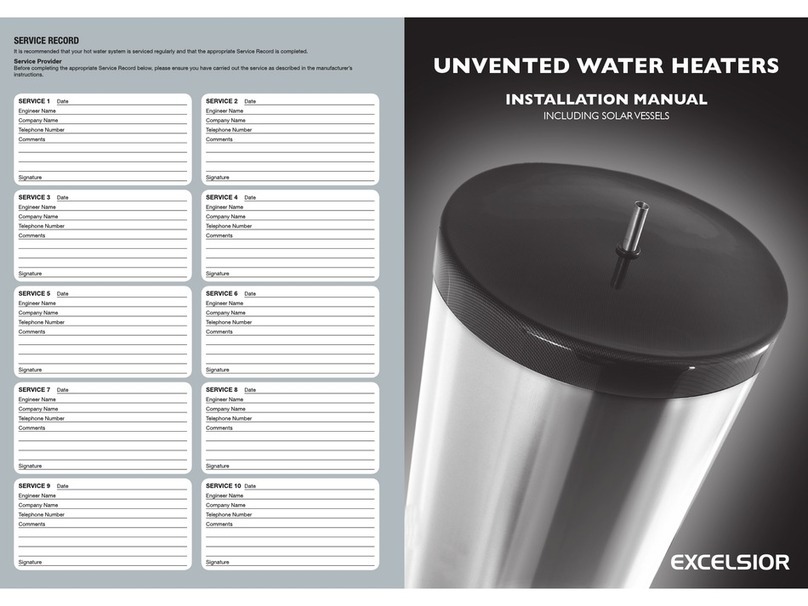#"
" "
"
1. Introduction
The Excelsior unvented water heater is a high quality stainless steel unvented cylinder which can provide hot water from a
cold mains water supply of between 1.5 bar and 16 bar.
The indirect heat exchanger surfaces are designed to provide a rapid heat up time. The unit comes complete with all the
necessary safety equipment to comply with legislation governing the installation of such systems.
The Excelsior Solar and Heat Pump unvented water heaters have been designed for use with all solar panels and ground
or air source heat pump systems requiring a storage and heating vessel (please ensure compatibility prior to installation)."
1.1 Specifier’s Guide
The Law & Unvented
It is legal to fit an unvented unit into any property."
There is no longer a requirement to have an old-fashioned ‘Tank in the Roof’ system.
The Benefits of Excelsior
Duplex stainless steel
High quality finish
Low heat loss for maximum economy
No sacrificial anode - low maintenance
!
The Benefits of Unvented Systems
The Excelsior fills a bath in minutes and can run two at the same time
The Excelsior can work off electricity (Economy 7) or alternative energy systems*
A power shower without the noisy pump
No tanks in the roof
No ball cocks to jam or leak
All your water, hot and cold, direct from the mains
Site the Excelsior unvented water heater wherever convenient*
*not suitable for solid fuel boilers. *refer to ‘Siting the Excelsior unit’ in section 3.1
!
Excelsior Solar
The Excelsior solar range is available in many vessel capacities, in both direct (electric) or indirect models. Each cylinder
has been specifically designed for use with an alternative energy heating system and includes a large corrugated coil heat
exchanger that provides optimum heat transfer from the alternative heat source to the water in the cylinder.
The Excelsior solar unvented water heater should only be used as part of a solar installation and configured as shown.
Additional safety devices may be required if the cylinder is operated with other heat sources.
Excelsior Heat Pump
The Excelsior Heat Pump range has been specifically designed to optimise the output from the heat pump. It is fitted with
a corrugated coil heat exchanger that has a larger diameter than that used on the standard Excelsior cylinders.
Always ensure the correct type of cylinder is paired with the renewable heat source. Failure to do this may result
in the system being inefficient and in extreme cases cause failure of components. Consult the heat pump/solar
installation manual prior to cylinder installation.





























